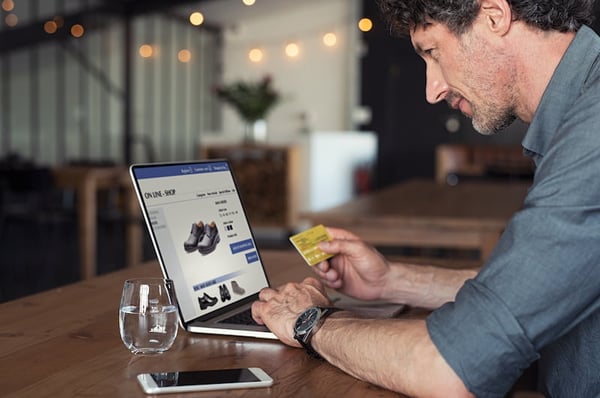Amazon now accounts for roughly half of all online sales, and third-party selling on the channel is growing at a frightening rate.
Are you a 1P vendor wondering if becoming a 3P seller is in fact a better model? Or maybe you have been using an authorized 3P seller to sell your products on Amazon for a while and you want to understand more about the pros and cons of this setup?
In today’s article, Bobsled’s Caroline Adams has broken down the nuts and bolts of third-party Amazon selling, and the most important things in relation to controlling your brand’s Amazon presence.

Who Are Amazon Third Party Sellers?
There are many acronyms associated with the Amazon marketplace. The two most popular are 1P and 3P.
- 1P aka ‘first party vendors’ sell products directly to Amazon. Amazon in turn sells products to consumers on their platform. Think wholesale.
- 3P aka ‘third party sellers’ or ‘third party retailers’ sell products directly to consumers using the Amazon platform. Think consignment.
3P sellers are not necessarily brand owners or product manufacturers. They are often resellers or distributors of a brand. In some cases, brands or manufacturers use a hybrid approach and sell on Amazon through 1P and 3P.
Importantly, in the context of 3P selling, Amazon never takes ownership of the goods being sold – they simply facilitate the transaction between seller and consumer.
Amazon Third-Party Sellers Data
The following data points illustrate the enormity of third party selling on Amazon;
- According to Marketplace Pulse, third-party sellers on the Amazon marketplace sold $300 billion worth of goods in 2020
- 3P sellers represent close to 60% of Amazon’s total sales since the company began in 1999
- Third-party sales on Amazon are growing at 52% a year (compared to 25% for 1P sales)
Considering these staggering numbers, even a small piece of the pie is enticing to brands, resellers, and budding entrepreneurs alike.

Why Is Amazon So Great For Third Party Retailers?
Amazon’s goal is to offer the best possible prices and the widest range of products online. Brands, retailers, distributors, and entrepreneurs can list their own or purchased products for sale.
Just about anyone can set up a 3P selling account. They just need a bank account and routing number, chargeable credit card, Government-issued national ID, tax information, and a phone number. This low barrier to entry opens up the platform for legitimate and illegitimate sellers.
- Authorized or legitimate sellers are resellers who sell valid, authentic products acquired through legal means.
- Illegitimate, rogue, or unauthorized sellers are resellers who sell products that have been acquired through illegal or illegitimate means.
Note: Unauthorized sellers could be legit distributors of a brand’s products through other channels (e.g. brick-and-mortar retail stores), however, they have not been authorized by the brand or manufacturer to sell on the Amazon platform. It’s also possible for authorized sellers to ignore the brand or manufacturer’s MAP policy, which means they are infringing on the brand’s Amazon selling terms.
💡Check out How to Protect Your Brand on Amazon
From Unauthorized Sellers
How do Amazon Third Party Retailers Typically Operate?
There are several potential 3P set-ups;
- Brands or manufacturers can be a 3P retailer and sell products directly to consumers via the Amazon marketplace.
- Distributors or resellers can buy directly from manufacturers or brands through wholesale agreements, discontinued closeouts, liquidation houses, or Amazon’s warehouse programs, and sell products to Amazon customers via a 3P retailer account. These retailers typically sell a variety of different items based on the profitability of each item and may sell certain SKUs for a limited period of time on the Amazon platform due to inventory availability.
- Unbranded products can be purchased directly from factories by different 3P parties. This inventory is subsequently branded and sent to Amazon’s FCs (this practice is known as ‘private labeling’). As many 3P sellers are all selling essentially the same product at a very similar price, this creates cutthroat competition within the marketplace, even for the manufacturer who sells the ‘original’ version of the product.

How Can Brands Control Unauthorized 3P Retailers On Amazon?
“My first suggestion is to ensure that a robust MAP policy is in place,” explains Caroline. “Asking Amazon to help protect your listings from unauthorized sellers of authentic SKUs will not be a success, even if you have registered a patent or trademark, as Amazon does not view unauthorized sellers as policy violators. However, by setting up a watertight MAP agreement with your authorized resellers, this will drastically reduce the chance of unauthorized 3P sellers undercutting you on Amazon.”
“Remember that Amazon is a catalog business which is designed for more than one seller to be on a listing. However, Amazon does not allow counterfeit items to be sold on their channel as this really hurts consumer trust. They do have a Brand Transparency Program, and this is something brands should explore if they suspect 3P counterfeiters are squatting on their Amazon listings.”
💡 Learn more – The Amazon Transparency Program Is A
Counterfeiter's Worst Nightmare
The Pros & Cons of Using a 3P Model on Amazon
If you are a brand looking to start 3P selling on Amazon, a 1P Amazon vendor, or perhaps you are already using an authorized 3P reseller to sell your products on the channel, you may be curious to learn more about the pros and cons of this strategy.
Pros
- Increased market presence and better distribution for a brand’s products
- More visibility to ‘directly’ acquire new customers
- Some brands purposefully sell wholesale to multiple authorized Amazon 3P resellers concurrently. In some situations this creates healthy competition amongst the sellers, diffusing the risk of putting all your eggs in one basket, providing more protection for your brand.
- Increases the opportunity to obtain more loyal Amazon customers for repeat purchases
- 3P sellers generally achieve a better profit margin on Amazon vs 1P vendors
Cons
- Price erosion. 3P resellers can undercut MAP pricing guidelines to get ahead of other sellers in order to win the coveted Buy Box
- Brand equity may suffer if a 3P reseller controls the product display page (PDP) content unless the brand is selling the same product on 1P and is brand-registered
- Harder to control marketing or promotions so competition amongst sellers increases, the end result is a bidding war for the Buy Box
💡Learn more – The Pros and Cons of Selling Through 3rd
Party Retailers on Amazon
Amazon Third Party Selling Is Here To Stay
To summarize, Amazon wants to continue having multiple sellers of each product, as it helps keep prices competitive, making products more appealing to buyers.
Brands can take control of Amazon by implementing a successful 3P strategy of their own. Brands that aren’t interested in selling directly to consumers on Amazon should strongly consider developing a network of trusted resellers that will maintain pricing, quality control standards, and brand integrity, otherwise unauthorized 3P resellers may quickly erode your brand’s presence on the Amazon channel.

Tagged: Amazon Account Management
.png)

